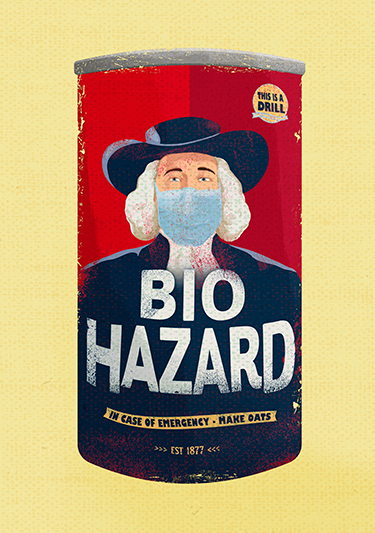Discoveries
Recipe for Disaster
Dec 10, 2019 Cedars-Sinai Staff

Illustration: Oli Winward
Medical disaster movies can be exciting to watch but, for Jonathan Grein, MD, director of Hospital Epidemiology, they are often frustrating. “So many fascinating things could be shown, but they don’t emphasize those,” he says.
As head of the Special Pathogen Response Team, Grein has firsthand experience simulating public health crises. His team is one of only 10 groups selected nationwide to treat highly infectious diseases, like Ebola and MERS, that carry severe consequences. The team conducts drills year-round so they are prepared to contain real-life harm should a worst-case scenario occur.
To achieve (occasionally icky) realism, the team has used oatmeal to mimic vomit and Gatorade for urine. A cafeteria tray serves as a toilet cover, and an invisible fluorescent dye called Glo Germ stands in for blood. “You can rub it on all sorts of surfaces, like bed rails,” Grein says. “Afterward, we bring in the black light so staff can see where they contaminated themselves on their protective suits.”
But the most difficult reality to mimic is the adrenalized, emotional state of a true emergency situation.
“One of the hardest scenarios was when we had a healthcare worker down ... and you basically have to execute a rescue,” says Sylvia Cumplido, RN, MSN, a nurse-epidemiologist, describing a drill in which a staff member mimicked passing out in a patient’s room.
“You want to move fast but, if we slow down and go methodically, we don’t make mistakes,” Grein adds.

